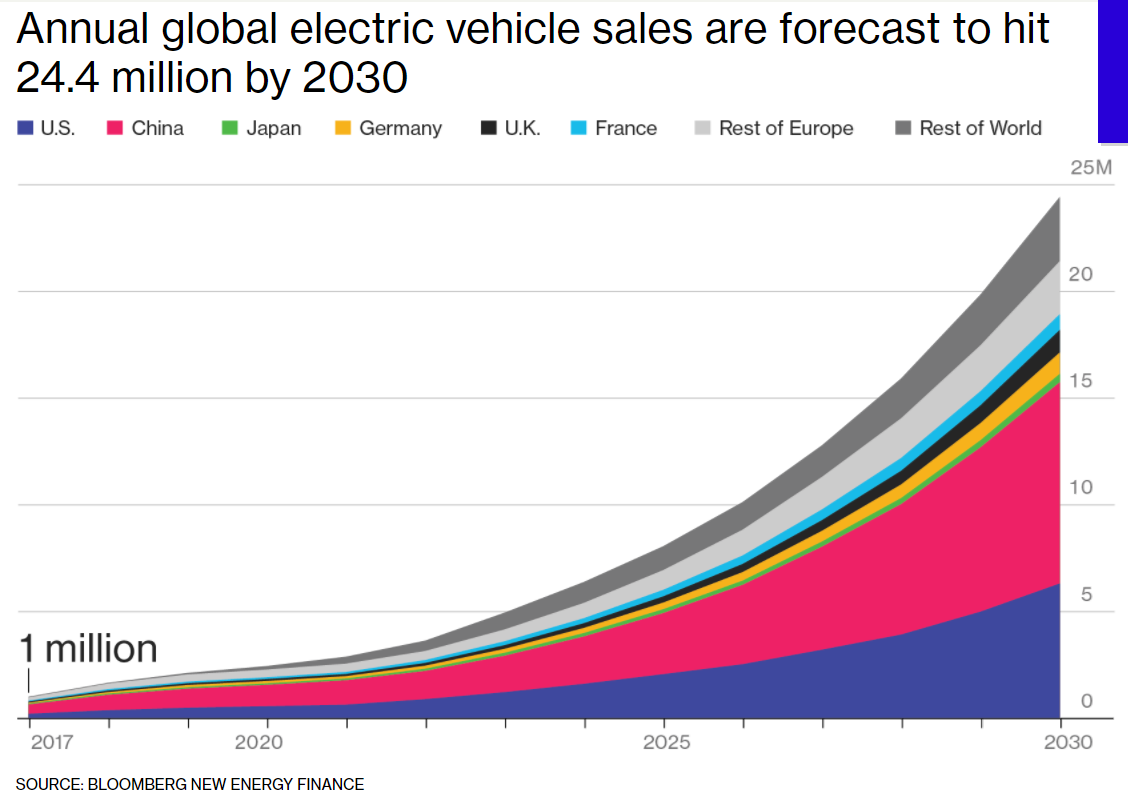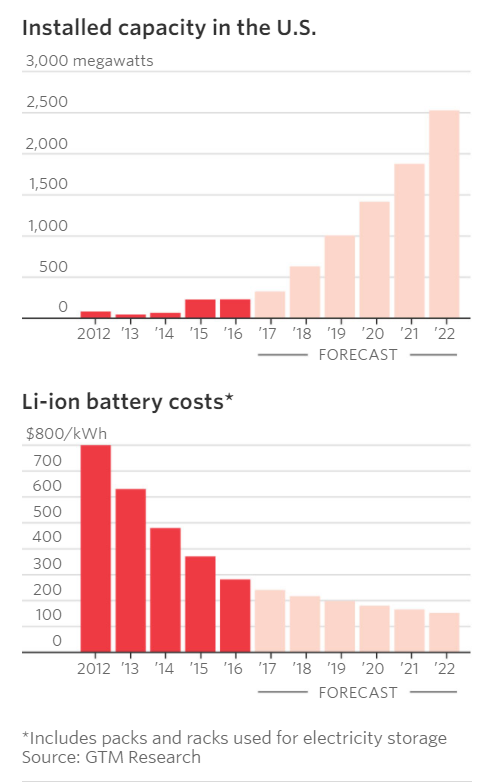Battery demand is expected to grow strongly in the (near) future in the following areas:
- Electrical car batteries
- Home storage batteries
The electrical car market is expanding. As the figure below predicts annual global electrical vehicle sales are projected to hit 24 million by 2030. One reasons for this is that there are significant cost reductions and environmental benefits to driving Electric cars. Also with the introduction of newer models of Electric sport cars gradually electric cars are built to outperform traditional oil and gas driven cars.

Going pair-on-pair with improvement in electrical cars, solar panel sales are also soaring as each year a lower price/W is reached while still efficiency improvements are being made. With the effect that energy consumers are switching to installment of solar panels they are actually becoming ‘prosumers’ being able to produce power themselves. After the realization that when sufficient solar panels are installed to offset your own energy consumption, investment into an electrical car has a larger incentive now that the extra solar panels are producing at a marginal cost of zero. For the prosumer this means that he/she can charge his car against no extra additional costs per charged Watt from the solar panels.
Solar panels obviously generate power during the day and most efficiently when the sun shines unblocked by clouds, rains etc. Our energy use is not exactly aligned with this so there are 2 options here to go around this problem
- Store all the energy you are not using into a battery and then use it when you need it again
- Deliver energy you are not using to the grid and consume the energy you need from the grid when you are in need again.
The more consumers will chose for the first option the more we expect a need for home battery systems like for example the Tesla Powerwall. When people deliver and consume back from the grid the options to store energy are somewhat larger. This can be for example:
- Larger scale batteries
- Pumped hydro: To pump up large volumes of water to reservoirs at a higher altituted and win the energy back later by using turbines.
- Thermal energy storage and others.
Nonetheless with increasing solar panel and wind mill installation we are undoubtly creating more variance in power output into our electricity systems thereby increasing the demand to install battery capacity. The below figure gives an insight into how much we actually expecting the battery capacity to grow in the US:

The expected installed capacity is expected to go up quite exponentially over the next years to come. Included in this projection is the expected decrease to the costs of Li-on batteries (the currently most promising battery technology) which is further adding to the expected increase of installed capacity. We will go further into the Li-On technology and cost projections in the next article of this battery series about battery technology.
